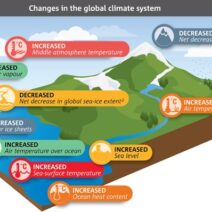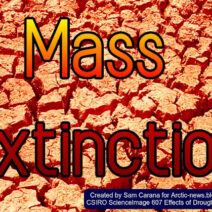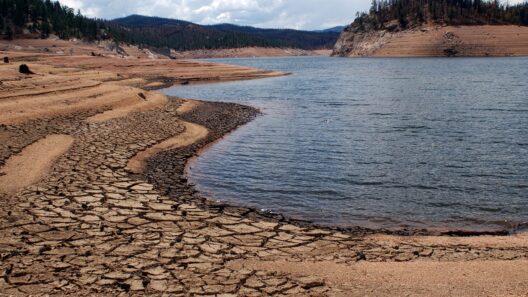As we traverse through the 21st century, we frequently encounter a persistent question: Why is the climate clock ticking? While many may perceive climate change as a distant threat, the reality is alarmingly imminent. The ticking sound heralds a critical juncture in our planet’s ecological narrative, one that requires an immediate and concerted effort to mitigate potential catastrophes. Understanding this urgency is paramount in fostering a collective consciousness geared toward action and sustainability.
At its core, the climate clock serves as a metaphorical representation of the finite time we have to avert the most catastrophic impacts of climate change. The challenge? Our planet is at a crossroads, and decisive action must be taken before it’s too late. The looming specter of escalating temperatures, melting polar ice, and intense weather events often poses a playful question: What possible actions can we undertake to extend the life of our planet’s ecosystem?
To delve deeper into the urgency reflected by the ticking climate clock, one must first examine the scientific consensus surrounding climate change. It is established that human activities, particularly through the burning of fossil fuels and deforestation, have contributed significantly to the increase in greenhouse gas concentrations in our atmosphere. The repercussions of these actions manifest in the form of global warming, where average global temperatures are on a trajectory to rise by 1.5 degrees Celsius above pre-industrial levels—a threshold we must not surpass.
The Intergovernmental Panel on Climate Change (IPCC) has articulated this urgency with alarming clarity. Notably, if we continue our current trajectory, we are likely to exceed this critical threshold by the year 2030. The clock is indeed ticking, and the impacts are already being felt across diverse ecosystems. From coral bleaching in the Great Barrier Reef to unprecedented wildfires in Australia, the manifestations of climate change are not merely theoretical; they’re visceral realities threatening biodiversity and human existence.
Furthermore, rising sea levels present an existential threat to coastal communities worldwide. As glaciers and ice sheets continue their relentless melt, ocean waters encroach on shorelines, displacing populations and leading to contentious geopolitical situations. The urgency of the situation compels nations to strategize for climate resilience, yet many still grapple with the inertia of policy-making and lackluster commitment to sustainable practices.
This is where the playful question arises: How can we all engage in meaningful change, and what contributions can individuals make to stem this existential tide? It may begin with an acknowledgment of our carbon footprints—how each choice, whether it’s our daily commute, the food we consume, or the products we purchase, can have far-reaching ecological implications. Empowering individuals to adopt sustainable practices is crucial. Simple measures like reducing single-use plastics, conserving energy, and advocating for renewable energy use can collectively yield substantial benefits.
Yet, individual action, while indispensable, is insufficient in isolation. Systemic change is paramount. Governments must re-evaluate their policies surrounding energy production and consumption, prioritizing investments in green infrastructure. Transitioning from fossil fuels to renewable energy sources such as solar, wind, and hydroelectric power is a pressing necessity. It is within these policy frameworks that the urgency of the climate clock can be meaningfully addressed.
Moreover, engaging in grassroots movements and supporting climate advocacy organizations can amplify the call for urgent action. By participating in local initiatives, individuals can contribute to a collective force, making their voices heard in the halls of power. This blend of personal responsibility coupled with systemic advocacy creates a potent formula for ensuring that the climate clock ceases its alarming tick, transforming it into a harmonious rhythm of progress toward sustainability.
The role of education cannot be overlooked in this vital discourse. An informed populace is crucial in combating climate change effectively. Educational institutions should prioritize climate literacy, equipping future generations with the understanding necessary to tackle ecological challenges head-on. When individuals grasp the scientific underpinnings of climate change and its socio-economic impacts, they become empowered advocates for the environment, ready to challenge the status quo.
Ecosystem restoration represents another pivotal aspect of addressing climate change urgently. Reforestation and the restoration of wetlands can play an instrumental role in sequestering carbon and re-establishing ecological balance. Nature has an extraordinary ability to heal itself when given the opportunity, and investing in these restoration projects can mitigate some of the adverse effects of climate change.
As the climate clock continues to tick, the conversation must evolve beyond alarmism. It is time for a proactive stance—one that embraces innovation and collaboration. Technologies like carbon capture and storage, advancements in battery technology, and sustainable agricultural practices must be leveraged to redefine our interactions with the environment. Humanity has an innate capacity for innovation; the challenge is harnessing this creativity to engineer a response to climate change that is as dynamic and multifaceted as the problem itself.
In conclusion, the urgency encapsulated by the climate clock is not merely a figment of our imagination; it is a clarion call for immediate action—an imperative for the survival of our planet. As we collectively ponder the playful question of how we can contribute to this urgent cause, the answers lie within our capacity for both individual and systematic transformation. It is not just about the hours we have left; it is about how we choose to spend that time. The clock may be ticking, but together, we can still turn back the hands of time for our planet.







